There's an old joke circulating among entomologists about excited novices contacting them about finding a "two-headed butterfly."
Sounds like National Enquirer stuff, right?
Wrong. Just two butterflies mating.
If you see lots of Gulf Fritillaries (Agraulis vanillae) frequenting their host plant, the passionflower vine (Passiflora), you might spot a two-headed butterfly--if the angle is right.
This butterfly is a comeback butterlfy. It first appeared in California in the vicinity of San Diego in the 1870s, according to noted butterfly researcher Art Shapiro, professor of evolution and ecology at the University of California, Davis. He's been monitoring the butterflies of central California for four decades and maintains this website.
From San Diego, “it spread through Southern California in urban settings and was first recorded in the Bay Area about 1908," says Shapiro. "It became a persistent breeding resident in the East and South Bay in the 1950s and has been there since.”
We remember hearing about the butterfly in the Sacramento/Davis area in the 1960s. Shapiro says it “apparently bred in the Sacramento area and possibly in Davis in the 1960s, becoming extinct in the early 1970s, then recolonizing again throughout the area since 2000.” Read what he wrote about them.
In our little pollinator garden in Vacaville, it's been a good year for Gulf Frits, with multiple sightings of two-headed butterflies. The following images, however, are of all same pair.
Attached Images:

Gulf Fritillaries (Agraulis vanillae) on their host plant, Passiflora, doing what nature intended. At the far right is a Gulf Frit caterpillar. (Photo by Kathy Keatley Garvey)
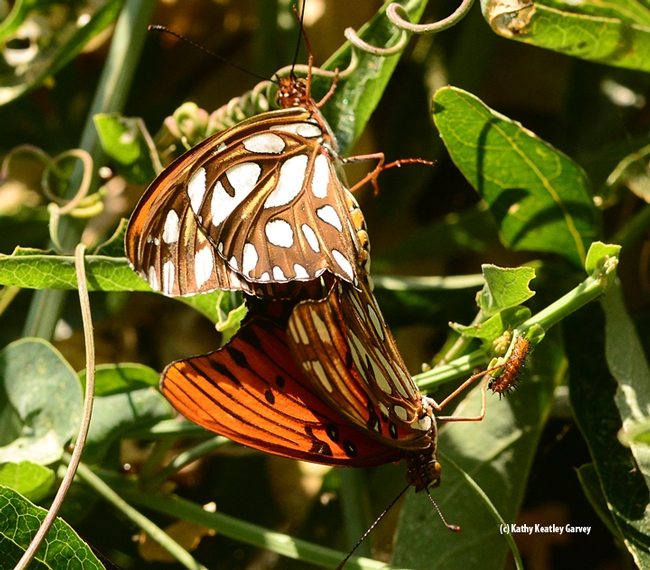
Photo Two: The Gulf Fritillaries begin to spread their wings. (Photo by Kathy Keatley Garvey)
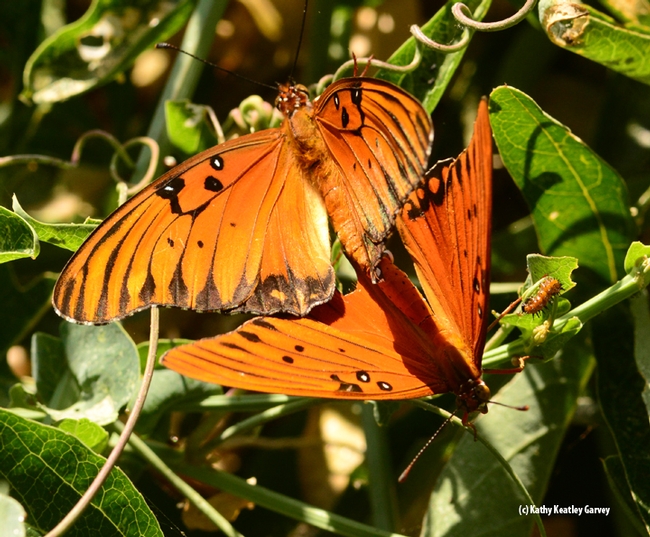
Photo Three: The reddish-orange wings of the Gulf Fritillaries are stunning. (Photo by Kathy Keatley Garvey)
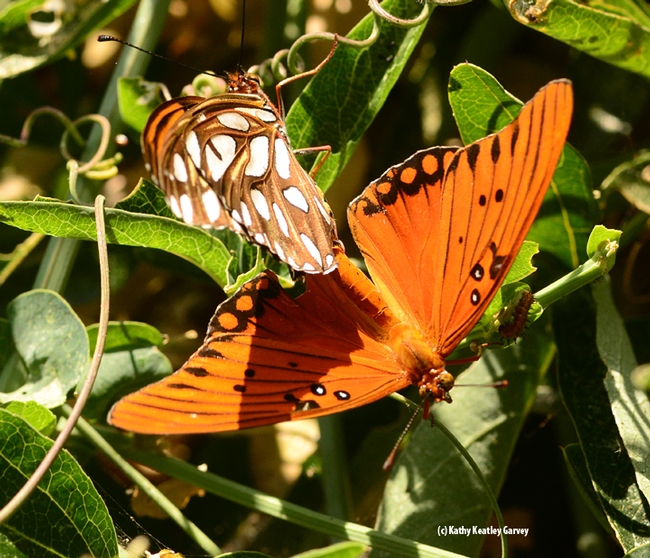
Photo Four: The coloring and contrast of the silver-spangled and reddish-orange wings make it one of the showiest butterflies in California. (Photo by Kathy Keatley Garvey)
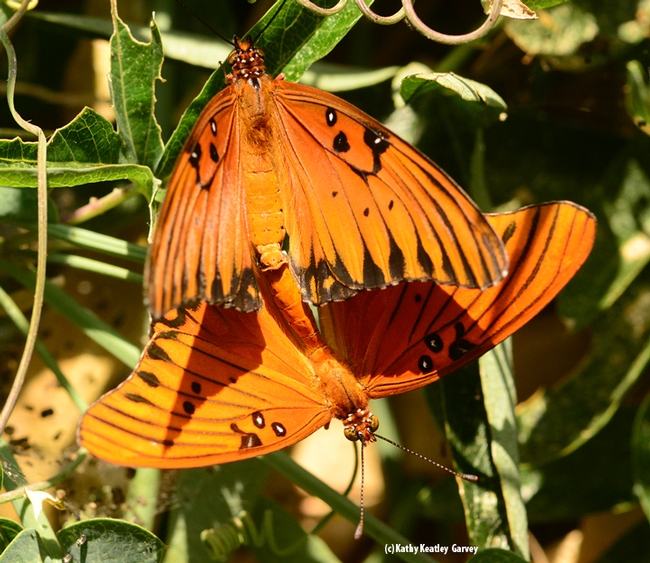
Photo Five: These butterflies engaged for about 10 minutes, while the photographer was there. (Photo by Kathy Keatley Garvey)
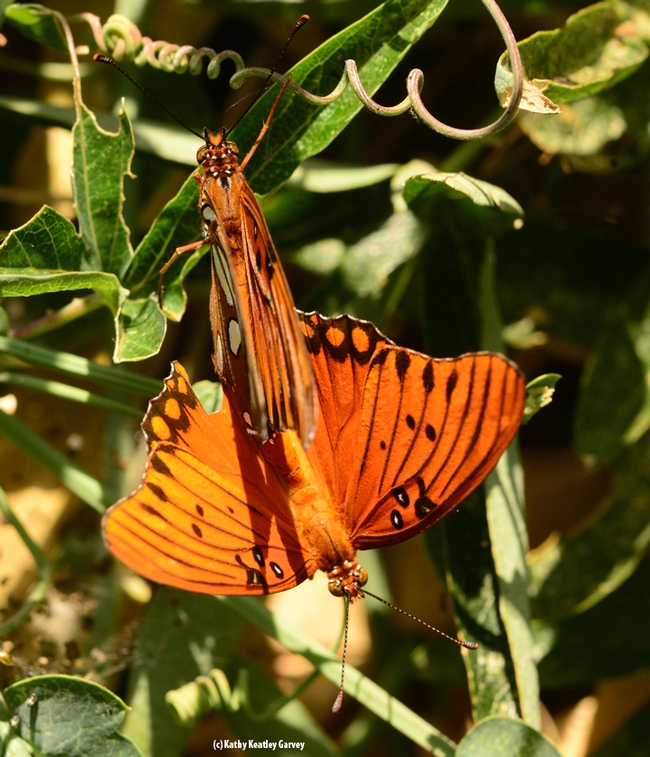
Photo Six: After the photographer captured this image, the butterflies separated and flew their separate ways. (Photo by Kathy Keatley Garvey)